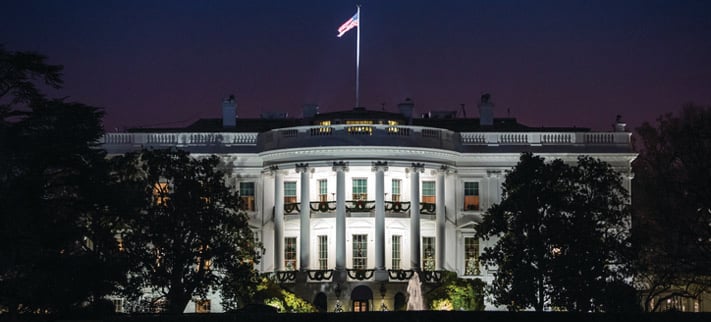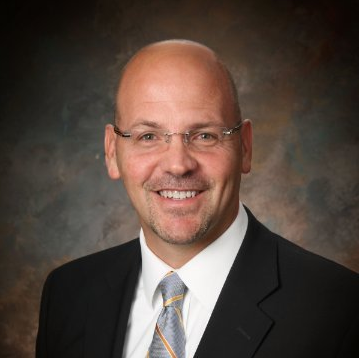 A disclaimer: This is NOT a political statement. Nor is it an endorsement or criticism of Donald Trump as a President. It IS, however, a harsh criticism of what appears to be a struggling hiring system. Candidate Trump vowed to run the White House like a business, and any business is built on its human capital and talent systems.
A disclaimer: This is NOT a political statement. Nor is it an endorsement or criticism of Donald Trump as a President. It IS, however, a harsh criticism of what appears to be a struggling hiring system. Candidate Trump vowed to run the White House like a business, and any business is built on its human capital and talent systems.
In his previous line of work, he had decades to build his team. He probably hired based largely on personal relationships and instinct. If he was wrong, he had time to correct the mistake.
Now, he has a short window to fill a large number of diverse, complex, senior positions. There are plenty of highly qualified and talented people in various roles in the administration. His hiring system as a whole, though, appears to be struggling. We’d be happy to help - if he wants help. Yes, I’m offering up our team’s services.
Related: Evidence-Based Hiring: Everything You Need to Know
What does a good hiring system look like?
-
It efficiently and effectively fills open positions.
-
It identifies people who are qualified, have the requisite skills, and are likely to succeed in the role.
-
It identifies people who are a good fit for the role and likely to stay.
How is the Administration’s hiring system doing?
By these three criteria, not well:
-
By some measures, 15 months into the administration there are over 250 important positions still unfilled.
-
Many of the hires have not met minimum hiring qualifications (background checks and security clearances) or have otherwise struggled.
-
The turnover rate is absurdly high. Senior leader turnover at this rate would cripple most companies and HR would be answering some tough questions about the process.
How do you build a hiring system?
-
Define the skills and attributes required for the role.
-
Define an efficient and effective process for evaluating and vetting candidates.
-
Put tools in place to evaluate the candidates’ experience, skills, attributes, and to analyze their likelihood of success.
How do you do this for high level, administrative positions? It’s not that different from building a hiring system for a senior role for any large, complex corporation. But – the time frame is shortened and the diversity of the roles is daunting. All the more reason to have an effective strategy and process.
What information do you use to evaluate candidates?
When evaluating a candidate for a leadership role, we look at three areas of data:
-
Perception Data – If it’s an internal candidate, this would be feedback from superiors, colleagues, and subordinates. (Sometimes you’d use some version of a 360-degree assessment). For external candidates, you have references. Perception data is often faulty due to rater bias or perceptions limited to a specific context that doesn’t translate to the new role.
-
Performance Data – When you have relevant past performance data, it can be invaluable. If it’s an internal candidate, you likely have some useful data. For an outside candidate, you need to look at the resume and how successful they’ve been in past roles. The past performance must, however, be relevant to be useful. Success in one arena does not necessarily predict success in another. Some performance elements are transferable and logical. Others are a stretch at best.
-
Personal Attribute Data – These are the behavioral traits that influence behavior and performance. What are the candidate’s natural tendencies? Do they handle stress well? Can they handle complex, strategic thinking? What about conflict management? Adaptability? Negotiation skills? Delegation? Planning and Organizing? Emotional intelligence (including self and social awareness)? These are usually measured with robust executive assessment tools like Select Assessment for Executives.
Related: How to Use the 3 P's to Predict Manager and Leader Success
What information is President Trump using to make these decisions?
It’s unclear, but I’m fairly certain his criteria are all in the perception category – his perception. Does he like the person? Does the person tend to support his ideas? If he’s looking at performance data, its often not relevant data. Success in one area does NOT always translate to another.
If he’s thinking about personal attributes, we have no indication he’s measuring them objectively and we know that intuition is poor measure of personality. Like most people, though, he trusts his instincts over proven measures.
Related: Many Executives are Really Bad at Hiring: A 3-Step Fix
There are some clear basic process gaps as well. A more thorough vetting process may have prevented a few problematic hires.
A few examples:
-
VA Secretary. This week, President Trump announced he was replacing David Shulkin, Secretary of Veterans Affairs, with his White House Physician, Dr. Ronny L. Jackson. Dr. Jackson, a rear admiral in the Navy is purported to be fine physician and well thought of by the past three administrations. Perception data is outstanding by all accounts, but is it relevant? As a personal physician, and even combat physician, his performance data is also outstanding, but how does that transfer to the new role? He’s never run even a single, small hospital let alone one of the largest agencies in the Federal government with 170 medical centers, 1,061 outpatient sites of care, and almost 400,000 employees. Mr. Trump perceives Dr. Jackson as a great physician. The lack of any relevant past performance data or experience didn’t sway him.
-
Secretary of State. He recently fired Rex Tillerson, his Secretary of State. Mr. Tillerson had led one of the world’s largest, most successful publicly traded companies. He understands complex, multi-national organizations. He’d reported to a Board of Directors and shareholders so he was no autocrat. Perception data seemed solid and reasonably relevant. But the structure of the state department and the art and science of diplomacy are unique. They may have required specific performance capabilities and personal attributes that Mr. Tillerson simply didn’t have.
-
White House Communications Director. The Administration recently lost Communications Director No. 3. “Communications” is its own profession. Training and skills developed by communications professionals over decades would qualify them for a communications job in the White House. The President’s second communications director, Anthony Scaramucci, is probably the best example of the administration’s hiring strategy (or lack thereof). He lasted less than a week. The President’s “perception” of Scaramucci was positive, but likely biased by a personal friendship. It was also based on his success in the world of finance. This was performance data that didn’t necessarily translate to the new role. Scaramucci’s personal attributes and behavioral traits might have revealed him less than ideally suited for the role, as well.
Again, this is meant to be only a criticism of the administration’s approach to senior leader selection. It would seem that the President is fond of off-the-cuff, instinct-driven decisions. Some people love him for it. However, decades of experience and data tell us that it’s not the most effective way to choose leaders.
If you are fan of the President, the turnover of senior staff should concern you. It hampers his ability to implement his policies. If you are in the business of building leadership selection systems, it’s just plain frustrating to watch.


 Bryan Warren is the President of J3 Personica, a consulting, assessment, training, and coaching firm, and a guest blogger for PSI. Bryan is an expert in progressive talent strategies, with a particular focus on leader and physician selection and development.
Bryan Warren is the President of J3 Personica, a consulting, assessment, training, and coaching firm, and a guest blogger for PSI. Bryan is an expert in progressive talent strategies, with a particular focus on leader and physician selection and development.